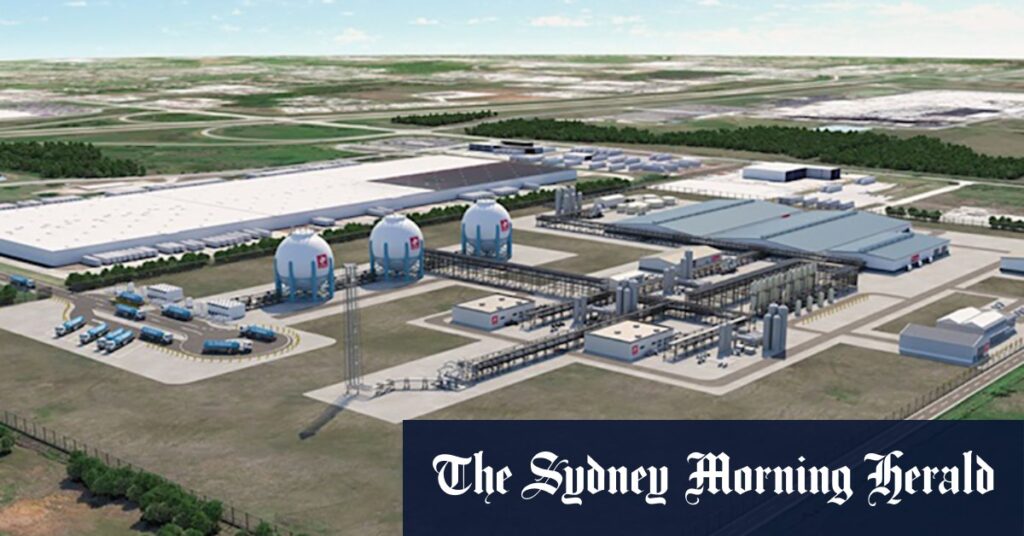
Woodside, Australia’s largest oil and gas company, has announced its decision to abandon plans for a lower-carbon fuels plant in the United States. This move comes as energy stakeholders grapple with former President Donald Trump’s recent policy changes, which include slashing tax incentives for green technologies.
The Perth-based energy giant informed investors on Wednesday that it would incur a $US140 million ($214 million) profit hit after opting to withdraw from the H2OK liquid hydrogen project in Oklahoma. The decision was attributed to the escalating costs of producing cleaner hydrogen and a weaker-than-anticipated demand from customers.
Woodside’s Strategic Shift
Woodside’s retreat from the liquid hydrogen project in Ardmore, Oklahoma, marks a significant strategic pivot. “We have made the decision to exit the H2OK project, demonstrating our disciplined approach to portfolio management,” stated Woodside’s CEO Meg O’Neill on Wednesday.
The company, known for its production of oil and liquefied natural gas (LNG), is actively exploring the development of lower-carbon hydrogen as part of its climate transition strategy. Hydrogen, which emits only water vapor when burned, is seen by many experts as a promising climate-friendly technology. It has the potential to replace fossil fuels and reduce emissions in heavy-polluting industries, provided it is produced using low- or zero-carbon energy sources.
Impact of U.S. Policy Changes
The announcement from Woodside comes on the heels of policy changes in the United States, where former President Trump has rolled back tax breaks for green technologies. These changes have created an uncertain environment for companies investing in sustainable energy solutions.
According to industry analysts, the removal of these incentives has made it more challenging for green projects to achieve financial viability. The rising costs associated with hydrogen production, coupled with policy uncertainty, have forced companies like Woodside to reassess their strategies.
Expert Opinions and Market Reactions
Energy experts have weighed in on Woodside’s decision, highlighting the complexities of the current market. “The hydrogen sector is still in its infancy, and policy support is crucial for its development,” said Dr. Emily Carter, a leading energy economist. “Without favorable policies, the financial risks become too great for many investors.”
“The hydrogen sector is still in its infancy, and policy support is crucial for its development.” — Dr. Emily Carter, Energy Economist
Meanwhile, environmental advocates express concern over the potential slowdown in green technology adoption. The shift away from projects like H2OK could hinder progress toward reducing carbon emissions and combating climate change.
Historical Context and Future Prospects
This development follows a historical pattern of fluctuating support for renewable energy projects in the United States. Over the past decades, changes in administration have often led to shifts in energy policy, impacting the growth and stability of the green energy sector.
Looking ahead, Woodside remains committed to its climate transition strategy, exploring other opportunities to develop lower-carbon technologies. The company continues to invest in projects that align with its long-term sustainability goals, despite the challenges posed by current market conditions.
As the global energy landscape evolves, the future of hydrogen and other renewable technologies will likely depend on consistent policy support and technological advancements. Woodside’s decision underscores the need for a stable regulatory environment to foster innovation and investment in clean energy solutions.
In conclusion, while Woodside’s exit from the H2OK project represents a setback, it also highlights the broader challenges facing the green energy sector. The company’s strategic pivot serves as a reminder of the critical role that policy and market dynamics play in shaping the future of sustainable energy.






